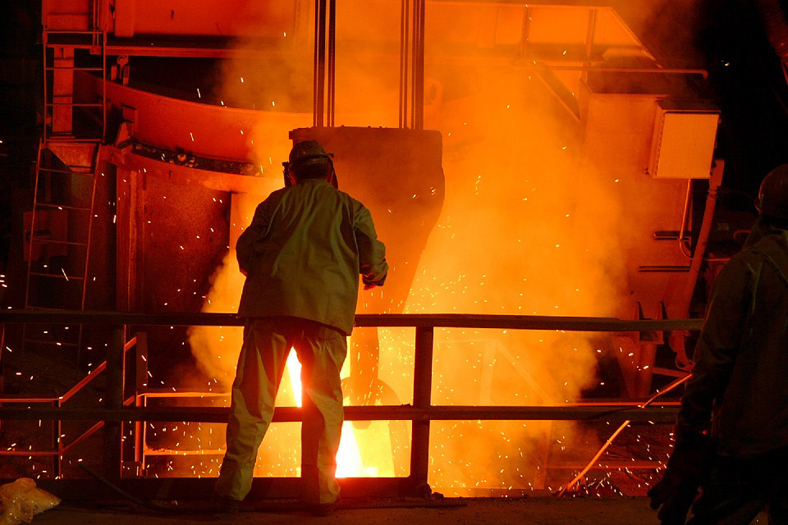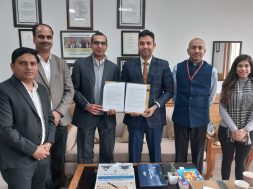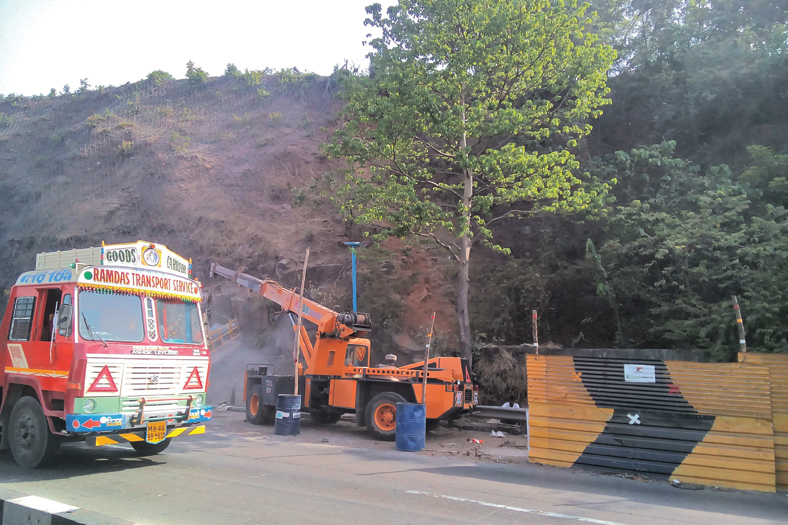National Steel Policy bets on higher infra spending

To achieve expected demand of 230 mt in 2030-31, steel demand will need to grow at a CAGR of around 7-7.5 per cent during the period against a CAGR of 3.5 per cent-4 per cent over the last 5 years.
The National Steel Policy 2017 announced by the steel ministry is betting on higher spending on infrastructure and construction through government initiatives to push steel demand and increase utilisation, India Ratings and Research (Ind-Ra) has said in its latest report.
The agency believes that the policy will give a boost to the struggling Indian steel industry; however the execution of provisions in the policy will remain a key challenge for the government. “The policy sets guideline to address all the pain points of the industry namely, muted demand, over capacity, raw material price volatility and technology inefficiency, which if adhered to diligently will enable the industry to be better placed to absorb any external shocks,” Ind-Ra said.
To achieve the expected demand of 230 million tonne (mt) in 2030-31, steel demand will need to grow at a CAGR of around 7-7.5 per cent during the period against a CAGR of 3.5-4 per cent over the last 5 year. In order to achieve the aggressive demand growth target government’s focus on building steel demand will be the key, which requires accelerated spending in infrastructure, construction, railways and the defence sector. The policy also focuses on taking steps to encourage the higher use of steel in projects by replacing other materials being used with steel wherever possible. Ind-Ra believes that the expected growth in steel demand looks ambitious and may face hurdles namely, political instability, budget constraint and timely execution of projects.
Further in order to protect the domestic industry from imports to meet the accelerated demand growth the government has announced another policy which provides preference to domestically manufactured iron and steel products for government procurement with immediate effect. The aforesaid policy excludes procurement of grades of steel not manufactured in India or where demand cannot be met through domestic sources. Ind-Ra believes the policy is likely to boost demand and realisations of domestic producers as they will not have to compete with imported material and is likely to increase capacity utilisation though it will be marginal. The steel producers with a higher proportion of value added products in their baskets will benefit the most from the preference policy.
To meet the demand growth the government plans to increase the steel capacity to 300 mt by 2030-31 (122 mt 2015-16), which would require extensive efforts toward increasing the availability of resources namely, infrastructure, raw material and finance. Ind-Ra believes that the capacity creation which requires capital expenditure of around Rs10 trillion will lead to stretched credit metrics on a sustained basis for companies, due to the continuous capex undertaken. Ind-Ra expects central public sector enterprises to be under pressure to build capacity for catering to any demand-supply gap after considering the capex by the private sector. Capex undertaken by public sector enterprises may further stretch the metrics of public undertaking, unless the government infuses funds to support capex instead of adding debt. Apart from resources, other hurdles also needs to be addressed like improvement in the approval processes for setting up plants, which generally leads to delays in the completion of projects.
The Indian steel industry imports around 85 per cent of coking coal for producing steel, which is highly volatile and has impacted and continues to remain a concern for companies profitability. The policy has taken cognisance of the same and plans to increase the domestic availability of coking coal through acquisition of overseas assets and the auction of domestic coking coal blocks in coalition with the Ministry of Mines and by installing coal washeries. If successfully implemented and the linkages provided to domestic producers, it will provide some stability to input cost, since producers will continue to depend on imports for majority (around 65 per cent) of their requirements.
India is self-sufficient in terms of iron ore availability to meet the estimates rise in requirements, but needs to expedite the approval process to enable timely availability of the resource. The policy also focuses on increasing the use of low grade iron ore fines in an efficient manner by bringing in regulatory changes, where required.
Indian steel industry lacks technological efficiency compared to global standard, thus making us uncompetitive against countries like China, Japan and Korea as well as poses a threat from import substitution. The policy focuses on improvement in the efficiency parameters so as to reduce the cost of production and develop advanced steel products to reduce the dependence on imports. However in order to achieve efficiency levels in most plants a significant amount of capex will be required to be undertaken by steel companies, which looks tough considering their financial health, baring for few large producers.
Ind-Ra believes that policy will be positive for the steel industry, however timely implementation of various steps will be crucial. Further, for the policy to be successful immediate steps to improve the existing situation of the struggling steel industry and ways to build demand leading to improvement in capacity utilisations of existing plants is warranted.
17
Cookie Consent
We use cookies to personalize your experience. By continuing to visit this website you agree to our Terms & Conditions, Privacy Policy and Cookie Policy.









